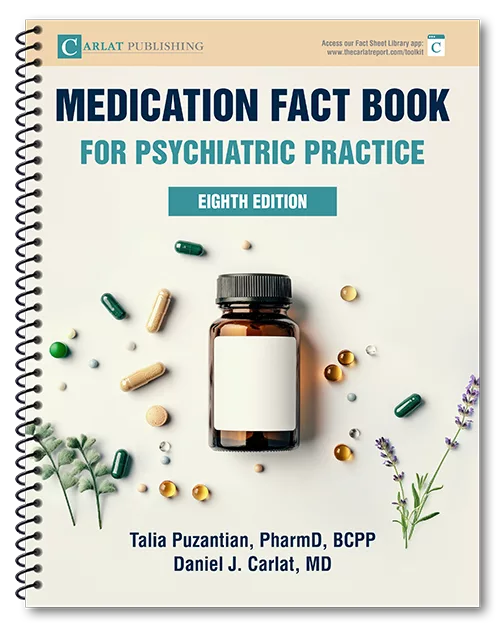Identifying and Treating Substance Use in Correctional Settings
Joshua Sonkiss, MD. President of Sonkiss Medical Consulting, LLC, Tucson, AZ.
Dr. Sonkiss has no financial relationships with companies related to this material.
Substance use in correctional settings is a hidden crisis that significantly impacts the health and safety of both patients and staff. Up to 65% of people in US jails and prisons struggle with substance use disorders (SUD), often alongside co-occurring mental health conditions (https://tinyurl.com/3rcw67a9). For correctional clinicians, it is a unique and critical challenge to identify and treat these patients within a system primarily designed for security, not health care.
Managing SUD in correctional facilities involves four key stages: intake screening, withdrawal management, facility-based treatment, and discharge planning. Each stage provides an opportunity to provide potentially lifesaving care but is also fraught with challenges, from detecting withdrawal symptoms to ensuring a smooth transition back into the community.
Screening
I recommend evaluating every patient for substance use, mental health disorders, and suicide risk at booking. Early detection is critical to prevent complications like withdrawal, psychosis, or suicidal behavior. For SUD screening, prioritize identifying those at immediate risk of overdose by asking focused questions to determine who needs urgent care. Key questions include:
When was the last time you used drugs or alcohol?
Patients reporting recent use, such as fentanyl within 4 hours of arrival, may not be safe for incarceration until cleared in an emergency setting.
What and how much did you use?
Knowing the substances and quantities used allows you to assess withdrawal or overdose risk. For instance, patients with recent heavy alcohol use may require immediate medical attention.
Are you experiencing withdrawal symptoms?
Monitor for signs like tremors, sweating, or agitation to determine if you should initiate withdrawal management. Make use of scoring systems like the Clinical Institute Withdrawal Assessment for Alcohol (CIWA) or the Clinical Opiate Withdrawal Scale (COWS).
Do you currently have drugs on you?
While law enforcement searches are a first step, they may not uncover all contraband, especially if drugs are ingested or well-concealed. Asking patients directly in a non-punitive manner can lead to important disclosures. If your patient admits to possessing drugs, ensure their safe removal to prevent overdose. Consider implementing “amnesty boxes,” where patients can safely dispose of contraband without fear of charges.
Are you interested in substance use treatment?
If the patient is open to treatment, connect them with services like medications for opioid use disorder (MOUD) or counseling. Even if they decline, continue asking at each clinical contact using a no-pressure, nonjudgmental approach, similar to motivational interviewing.
Avoid routine urine drug screens for every patient due to the risk of false positives, which can negatively impact patients’ legal proceedings. However, for those who cannot communicate clearly due to symptoms of psychosis or withdrawal, drug screens can help flag risks (for more on drug testing in the legal system, see CATR Jul/Aug/Sep 2024.)
Sometimes detainees will “stuff” large amounts of drugs like fentanyl into body cavities to avoid detection, posing a significant overdose risk. You can mitigate this risk by sending individuals to the ER if they show suspicious behavior during booking, such as frequent restroom visits or reluctance to be searched.
Psychiatric symptoms and suicide risk are also major concerns, as this population has a high rate of co-occurring disorders. Suicide risk can fluctuate in response to legal outcomes or personal events, so screening should be an ongoing process. Use the correctional version of the Columbia Suicide Severity Rating Scale (C-SSRS) (https://tinyurl.com/3y4cbsjm), which is specifically adapted to the unique stressors faced by incarcerated individuals (eg, the impact of legal issues, isolation, and triggers like court dates) and can be administered repeatedly to monitor risk.
Lastly, patients with SUDs are at a higher risk of infectious diseases. Whenever possible, screen for syphilis, viral hepatitis, and HIV.
Withdrawal management
Historically, forced withdrawal was the main “treatment” SUD patients received in jail. While the quality of care is improving, many facilities fall short of the care available in non-correctional settings. Managing complicated withdrawal remains a challenge, so maintain a low threshold for ER referrals, especially in cases where CIWA scores are escalating. Keep in mind that CIWA and COWS scores may be underreported in correctional settings.
Alcohol and benzodiazepine withdrawal
The Prediction of Alcohol Withdrawal Severity Scale, or PAWSS (https://tinyurl.com/2xunucwa) is helpful for assessing the risk of serious complications like hallucinosis, seizures, and delirium tremens. A score of 4 or more indicates high risk, and unless the facility can manage complicated withdrawal, I recommend hospital-based care. Beware, as elderly patients or those with comorbid medical problems may be at high risk despite a low PAWSS score.
Benzodiazepine withdrawal mirrors alcohol withdrawal but is often delayed. Benzodiazepine tapers may need to last a month or more, and seizure prophylaxis should continue throughout this period to prevent withdrawal seizures, which can occur weeks after tapering begins (see: “Deprescribing Benzos: A How to Guide” CATR Oct/Nov/Dec 2023).
A scheduled benzodiazepine taper combined with symptom-triggered dosing can help prevent “runaway” withdrawal symptoms. I also recommend seizure prophylaxis for all patients withdrawing from alcohol or sedatives, using levetiracetam (500 mg bid for 10–14 days, or one month for benzodiazepine withdrawal) or another antiepileptic. For a list of medications for alcohol, benzodiazepine, and opioid withdrawal, visit: www.thecarlatreport.com/SUDinprisons.
Opioid withdrawal
Opioid withdrawal management can be supportive or, with buprenorphine, a first step toward MOUD. Often considered benign, opioid withdrawal can be fatal in jails and prisons, primarily due to dehydration. I recommend offering electrolyte beverages like sports drinks. If patients cannot keep fluids down, they need hospital evaluation. Additionally, accidental overdoses from contraband drugs are common in the first hours or days of incarceration, so ensure a plentiful supply of naloxone is available.
In-facility treatment
Depression and anxiety disorders
For patients who report mild to moderate symptoms and no prior psychiatric diagnosis, wait for at least a month before diagnosing anything other than adjustment disorder. If medication is indicated, I prefer SSRIs and SNRIs to adjuncts like hydroxyzine and clonidine that may offer faster but less effective long-term relief.
Bipolar mania and psychosis
Intoxication and withdrawal can look like bipolar mania or a primary psychotic disorder, and we can’t assume that psychotic patients with positive drug screens are experiencing drug-induced psychosis. Many of these patients, especially those who use methamphetamine, will eventually develop a primary psychotic disorder (Wearne TA and Cornish JL, Front Psychiatry 2018;9:491). Therefore, I recommend proactive antipsychotic treatment. If psychotic symptoms completely remit after a month of abstinence, then consider a cautious antipsychotic taper if there’s no family history and a low likelihood—as in the case of prolonged incarceration—of resuming illicit drug use.
Alcohol use disorder
Naltrexone and acamprosate are reasonable options to control alcohol craving. Start these medications early so patients develop the habit of taking them before facing outside temptation post-incarceration (“on the outs”). Stay away from gabapentin due to its potential for misuse and because it can potentiate the sedative effects of opioids, increasing the risk of fatal overdose. Many clinicians are surprised to learn gabapentin is implicated in a large proportion of overdose deaths. In any case, because it is so commonly misused, correctional facilities often restrict its use. For a naltrexone and acamprosate dosing table, visit: www.thecarlatreport.com/SUDinprisons.
Opioid use disorder
MOUD is the gold standard of treatment and is being successfully implemented in an increasing number of jails and prisons. However, many facilities have yet to adopt this approach. This is partly due to the risk of diversion and from the stigma surrounding the use of methadone and buprenorphine, which some view not as treatment but as simply replacing one addictive substance with another.
Despite these hurdles, legal decisions in US federal court cases are affirming inmates’ right to access MOUD (https://tinyurl.com/msn3a4up). If your facility lacks an MOUD program, consider advocating for one. The NCCHC’s Jail Based MAT webpage is an excellent resource (www.ncchc.org/jail-based-MAT/).
Psychiatric medications
In correctional psychiatry, conservative prescribing is key due to the high risk of misuse and diversion, even with medications seen as benign in other settings. Psychiatric medications often acquire nicknames and become highly sought after for personal misuse or to circulate from cell to cell in an underground economy within facilities. “Bupropion is great when you snort it,” a patient once told me, “It’s like cocaine.” I recommend sticking with options that have less risk of abuse when possible. For a list of commonly misused medications in correctional settings and their nicknames, see www.thecarlatreport.com/SUDinprisons.
Although we’re trained to believe our patients, as a group, inmates are known to feign or exaggerate symptoms. In this setting, “do no harm” includes consideration of possible malingering and interpreting subjective symptom reports in context. For example, when patients say they’re depressed, look for confirmatory evidence in their facial expressions, body language, and attitude toward their situation. Are they hopeless about their criminal case, or actively planning a defense strategy? It’s helpful to ask correctional officers about patients’ eating and sleeping habits, interactions with peers, and other behavioral indices of mental health.
For all medications, monitor closely for cheeking and palming. If you suspect these behaviors, ask correctional officers to conduct a cell search. Although intrusive, this level of vigilance is necessary to prevent recreational use of prescription medicine and identify stockpiles that could be used for a suicide attempt.
Deceptive behaviors are frustrating for clinicians and are often met with punishment, but I prefer to normalize them as an expected feature of addiction. This is not the same as treatment nihilism. Instead, this approach removes the emotional response to treatment setbacks and provides an opportunity to model non-punitive approaches for both healthcare and correctional staff. Many correctional patients aren’t used to being treated with kindness and respect and demonstrating these qualities can significantly build trust and engagement.
Discharge planning
Correctional patients may be released from custody without warning, so the sooner discharge planning begins, the better. Overdose is the leading cause of death in the two weeks following release from jail, so prioritize connecting patients with MOUD before or shortly after release (Joudrey PJ et al, Addict Sci Clin Pract 2019;14(1):17). If this is not possible, offer patients a shot of extended-release naltrexone upon discharge to help reduce cravings and prevent relapse. Educating patients about naloxone rescue and providing intranasal naloxone at release are also effective strategies, as naloxone is much less controversial than MOUD.
Carlat Verdict: If your facility doesn’t provide optimal SUD treatment, don’t despair. A growing number of court decisions, as well as correctional culture change, are nudging SUD treatment toward the same standard of care as in other settings. By implementing practical recommendations for screening, withdrawal management, and access to medications like MOUD, you can improve care and outcomes in your facility.
Newsletters
Please see our Terms and Conditions, Privacy Policy, Subscription Agreement, Use of Cookies, and Hardware/Software Requirements to view our website.
© 2025 Carlat Publishing, LLC and Affiliates, All Rights Reserved.


_-The-Breakthrough-Antipsychotic-That-Could-Change-Everything.webp?t=1729528747)



